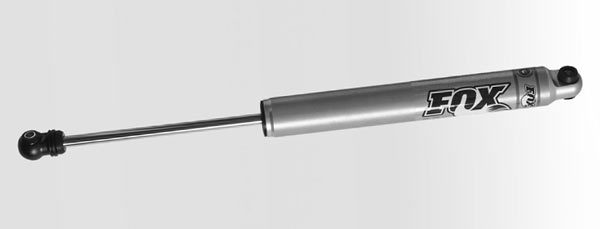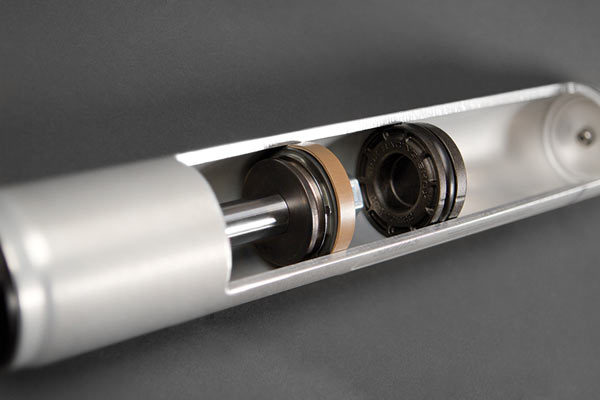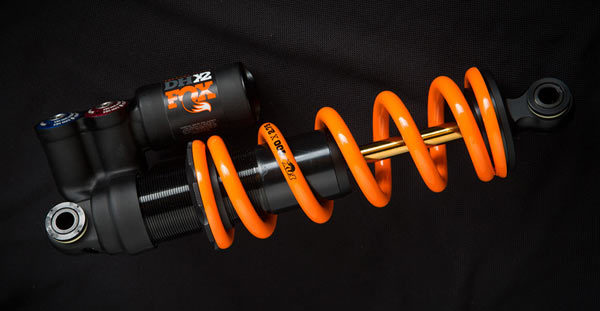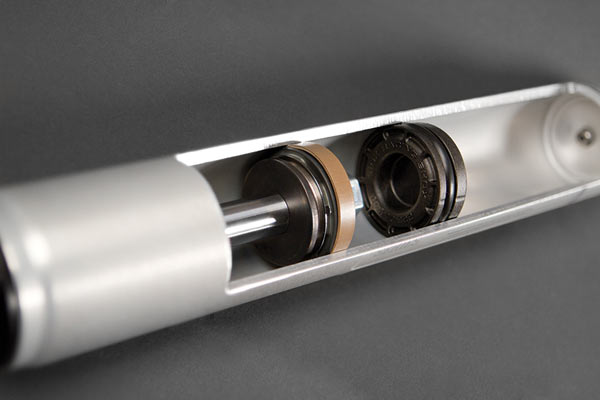
Last week, we invited every major suspension brand to chime in on cavitation, three responded before the cutoff time (which was pushed from our regular Wednesday to Friday to make sure we had multiple opinions). Bob Fox, founder of Fox Racing Shox, was out of the office, but he still took the time to respond, and his response is solid. Here it is in full:
“I always like to think about a simple example – a monotube shock with IFP (no remote reservoir). The basic deal is this: there will be some maximum compression damping force that a monotube IFP shock can produce without cavitation – and that maximum force will depend on the IFP pressure multiplied by the area of the bore.
“Simple way to understand this: consider a monotube shock with 200 psi IFP pressure and a bore area of 2 square inches. Now imagine we replace the piston on the end of the shaft with a SOLID piston with an O-ring seal on the OD. Also – if there are any passageways thru the end of the shaft – we seal those off. Thus, no oil can flow from one side of the piston to the other side.
“Now ask yourself what happens if you exert a compression force on that shock. Well, since no oil can flow thru the piston, the shock will not move.

“However, at some point it WILL finally move: when the compression forces reaches 400 lbs. At that point, oil still cannot flow thru the piston… BUT what will happen is that the whole slug of oil between the piston and the IFP – and the IFP also – will ALL begin to move further into the shock. This will then further increase the IFP pressure, thus requiring a somewhat increasing force on the shaft to continue the process.
“Meanwhile – what is happening on the other side of the piston? Well, a void is being created – a space with no oil. And what would happen if we suddenly released the compression force? Well – for a short distance, the shaft would rebound very quickly due to the void. Basically no rebound damping until the void was closed. Not a good thing.
“So that’s a simple example of cavitation.
“Of course, we were imagining a solid piston. Real shocks have valves and orifices.
“Correct. But the point is that – even with valves and orifices – there is still the same limit to the maximum compression damping you can get without cavitation. When you reach that point, the piston valves will still be flowing some amount of oil – but not enough to prevent some degree of cavitation.
“The above discussion was for a simple monotube IFP shock.

“Similar principles apply to remote reservoir shocks, but additional flow restrictions between the main piston and the reservoir increase effective IFP pressure and can greatly increase the compression forces that can be sustained without cavitation.
“Other architectures (for example FOX’s DHX2) can completely eliminate cavitation issues by routing IFP pressure directly to the rebound chamber during compression strokes.”
The fun never ends. Stay tuned for a new post each week that explores one small suspension tech, tuning or product topic. Check out past posts here. Got a question you want answered? Email us. Want your brand or product featured? We can do that, too.
